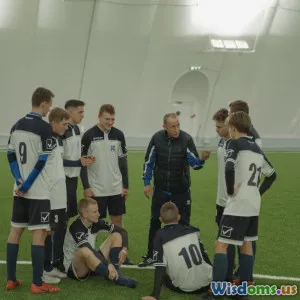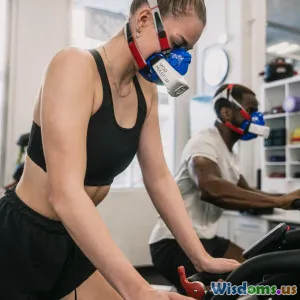
Youth Sports Specialization Is Early Focus Helping or Harming Kids
9 min read Explore how early youth sports specialization impacts children’s development, health, and long-term athletic success. (0 Reviews)
Youth Sports Specialization: Is Early Focus Helping or Harming Kids?
Youth sports have become an integral part of childhood across the globe. But over the last few decades, a notable trend has emerged: the push toward early sports specialization. While the dream of raising the next superstar athlete motivates many families, this early focus leads us to debate—are we truly helping children excel, or are we unintentionally harming them? This article explores the complex landscape of youth sports specialization, examining its benefits, pitfalls, and what science says about its effects on young athletes’ physical and psychological well-being.
Understanding Youth Sports Specialization
Sports specialization refers to intense, year-round training in a single sport, typically beginning before puberty. Unlike multi-sport participation, where children engage in various athletic activities seasonally, specialization involves concentrating on one sport to allow maximal skill development and competitive edge.
Recent surveys reveal increasing specialization trends: a 2019 study from the Aspen Institute found that nearly 73% of youth athletes specialized in a single sport by age 12. This rise has been propelled by factors including increased competition, parental aspirations, and the belief early focus enhances chances for scholarships or professional careers.
The Arguments Supporting Early Specialization
Skill Mastery and Competitive Advantage
Proponents argue that early specialization promotes rapid skill refinement. Spending more hours practicing specific techniques can lead to mastery unattainable through casual or multi-sport involvement. A study published in the Journal of Sports Sciences indicates that elite athletes, particularly in sports like gymnastics and figure skating, often specialize early due to sport-specific demands.
Increased Opportunities for Scholarships and Careers
Families often view specialization as a pathway to scholarships and professional sports. For sports with highly competitive pipelines, such as soccer and baseball, early specialization may theoretically improve visibility to scouts and access to elite coaching.
Structured Discipline and Goal-Oriented Development
Many coaches and parents believe specialization encourages discipline, goal-setting, and commitment. Repetition and consistency in training contexts are seen as valuable life lessons transferable beyond sports.
The Risks and Harms Associated with Early Specialization
Despite its perceived benefits, mounting evidence uncovers significant downsides.
Elevated Risk of Overuse Injuries
One of the most alarming consequences is the increased incidence of overuse injuries. Unlike acute injuries from trauma, overuse injuries result from repetitive stress without adequate recovery. The American Academy of Pediatrics highlights that specializing before age 12 correlates with a 70% greater risk of serious youth sports injuries requiring surgery or time off.
Common overuse injuries include stress fractures, tendonitis, and growth plate injuries. For example, youth baseball pitchers specializing early experience higher rates of elbow injuries and ‘Little League shoulder.’ The physical strain may lead to chronic problems extending well into adulthood.
Psychological Burnout and Loss of Enjoyment
Beyond the physical toll, psychological effects pose a significant concern. A 2020 study in Pediatrics found youth athletes who specialize early are more susceptible to burnout—characterized by emotional exhaustion, reduced motivation, and eventual withdrawal from sport.
The pressure to perform year-round, coupled with limited free time, can erode intrinsic enjoyment. Instead of fostering love for the game, children may feel trapped by rigid expectations.
Limited Motor Skill Development and Athletic Versatility
Multisport participation is crucial for broader motor development. Early specialization may limit exposure to varied movement patterns and skills, which research shows are vital for overall athleticism and injury prevention.
Iconic athletes such as NFL star Patrick Mahomes and NBA legend Steve Nash participated in multiple sports during youth, which experts credit for enhancing coordination and adaptability.
Social Implications
Single-sport specialization often demands significant time, limiting opportunities for varied social interaction. The isolation or intensity can negatively impact social development and create imbalanced childhood experiences.
Expert Recommendations and Guidelines
Recognizing risks, leading sports medicine and pediatric organizations have issued guidelines:
- The American Academy of Pediatrics advises children below age 12 engage in multiple sports rather than early specialization.
- The National Federation of State High School Associations suggests off-season breaks and limits on weekly training hours to prevent burnout.
- The International Olympic Committee encourages delayed specialization, particularly emphasizing play and diverse physical activities early on.
These guidelines aim to protect health while encouraging lifelong physical activity.
Alternatives to Early Specialization: Balanced Approaches
Several successful models have emerged balancing skill development and well-being:
Sampling Multiple Sports
Evidence shows that children who sample various sports up to at least age 12 develop better overall athleticism. Recreational leagues, school teams, and community programs provide rich contexts for skill variety.
Emphasizing Play and Fun
Play-centric environments reduce stress, fostering creativity and resilience. For instance, Scandinavian countries promote free play and multisport engagement widely, contributing to broad motor skill development.
Periodized Training
This approach sequences training across cycles with varying intensity and rest, reducing overuse injury risks. Coaches emphasizing periods of rest and cross-training discourage excessive specialization.
Real-World Insights and Voices
Parent Perspective
Jessica Lane, a mother of two young athletes, notes, “When we let our kids explore soccer, basketball, and swimming rather than push just one, they stay excited and have fewer injuries.”
Professional Athlete Reflection
Neymar Jr., one of football’s greatest talents, shared in interviews that his early diversification helped develop agility and creativity, advocating against overly early specialization.
Conclusion: Striking the Right Balance
Youth sports specialization is a nuanced topic without one-size-fits-all answers. While early focus may benefit certain sports or highly motivated, physically capable children, the balance of evidence points toward considerable risks in overuse injuries, burnout, and social limitations.
Parents, coaches, and policymakers must prioritize children’s long-term health and enjoyment over short-term competitive gains. Encouraging multisport participation, adequate rest, and fun preserves children’s motivation and physical development. Ultimately, the goal should be to nurture a lifelong love of physical activity, whether or not a child ultimately specializes.
Actionable Takeaway: If guiding a young athlete, delay sports specialization when possible, encourage diverse activities, prioritize safety and enjoyment, and consult with sports health professionals to tailor approaches for each child’s unique needs.
By fostering a balanced approach, we can help kids flourish not only as athletes but as healthy, happy, well-rounded individuals.
References:
- American Academy of Pediatrics. (2016). Sports Specialization and Intensive Training in Young Athletes.
- Jayanthi, N. et al. (2015). Sports-specialized intensive training and the risk of injury in young athletes: a clinical review. British Journal of Sports Medicine.
- Coté, J., & Vierimaa, M. (2014). The developmental model of sport participation: 15 years after its first conceptualization. Science & Sports.
- The Aspen Institute’s Project Play Report, (2019).
- Pediatric Burnout Study. Pediatrics, 2020.
Rate the Post
User Reviews
Popular Posts














